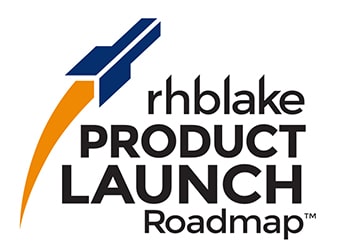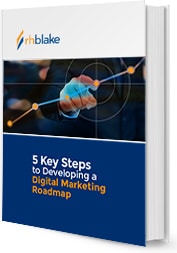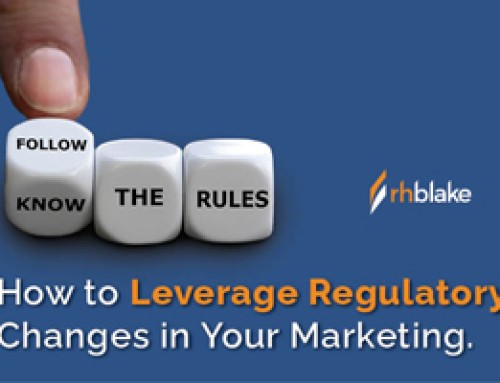Launching a B2B Industrial Product? Consider these Five Best Practices
Written by Dan Konstantinovsky
Strategic Marketing, RH Blake
![]()

Engineers are notoriously hard to reach with marketing messages. And they are typically risk-averse. Then you have the added pressure of not wanting to reinvent the wheel with your launch, nor overlooking key considerations or steps. You want to discover the path that other successful firms have followed with their B2B industrial product launches.
To help ensure your launch is successful, here are 5 best practices to consider following. They are distilled from the RH Blake Product Launch Roadmap™, a proprietary, structured process that RH Blake developed for industrial product launches.
1. Identify/Refine Your Industrial Product Launch Market
Start by describing the business case for your new product and why and documenting how it meets a viable need in the market. Establish a budget for marketing, advertising and publicity.
Buyers: Create buyer personas for each member of the B2B buying team. Describe them in terms of their job titles, job functions, responsibilities, challenges and compelling events that trigger their search for a solution like yours.
Buyer journey: Then map out what a typical buyer journey looks like. Identify the kind of content (such as white papers, case studies, product specs and pricing information) that each persona needs at each stage of their buyer journey. Describe the unique selling proposition that will appeal to each persona on the buying team. And define value statements for each persona.
Other opportunities: Identify complementary sales opportunities, ones where you can up-sell or cross-sell other products and services while you are selling your new product.
Competitors: Because your marketplace includes competitors, describe the competitive landscape. Identify your competitors by name, describe their offerings, and assess their strengths and weaknesses. Create a simple table that lists competitor offerings and compares them with yours. Pay particular attention to market segments and niches, and the buying needs of customers in those segments.
Metrics: Before you launch, determine how you will measure your success. Establish overall success metrics, such as:
- number of visits to the product page on your website
- number of sales inquiries
- number of sales appointments
- number of product demonstrations
- number of product trials
- number of products sold
Deliverables: By the time you reach the end of this step, you should have a written Business Case for your new product, a Messaging Framework, a Marketing and Communications Plan, a Training Schedule for your sales team and a set of Product Launch Success Metrics.
Ready to launch a B2B industrial product? Are you sure?
2. Offering Alignment for Your Industrial Launch
Once you understand the market for your product, start planning how you are going to get that product to market.
Align with engineering and manufacturing: Make sure your associates in product development, senior leadership, marketing and sales are aligned with those in engineering and manufacturing when it comes to the availability of prototypes and the date your product is ready for shipping.
Align with sales: Decide on your sales objectives and commission structures, and how you are going to measure performance. Draw up a list of target accounts and assign your salespeople to each one. Make sure everyone on your sales team understands the sequence of events and key dates for your product launch.
Align with product management: Remember that you are likely adding a new product to an existing—perhaps comprehensive—product portfolio. So, make sure your product management team crafts a coherent positioning statement that describes how your new product fits within your existing—and future—product portfolio.
Deliverables: During this step you will be busy drawing up multiple documents to help you launch your B2B industrial product successfully. These documents include:
- price sheets
- product demo scripts
- order forms
- delivery instructions
- installation instructions
- start-up and operating procedures
- maintenance manuals
- user manuals
3. Planning Your Industrial Product Launch Execution
Now you are ready to start talking to the people who are going to launch your new product to the marketplace.
Sales training: Create seminars, webinars, on-demand videos, training manuals, product demonstrations and other education your salespeople need to complete before you launch. If you sell through account-based marketing, collaborate with all stakeholders to define specific plans for selling your new offering to existing customers and potential customers at your existing strategic accounts.
Channel partner training: Determine your distribution strategy for getting your product to market, including the channels you will use. Do these people need training as well? Take the training materials you are developing for your sales teams and adapt them to meet the needs of your channel partners.
Headcount: Determine your personnel requirements for launch activities. Breakdown your list by department, considering every job function that plays a role in your launch.
Service: Work with your service department to anticipate the information your buyers are going to expect from them. This includes product images, schematics, online knowledge bases and troubleshooting guides.
4. Programs to Drive Product Launch Awareness and Consideration
You’re just about ready to launch, and that means you need to be prepared to communicate with your potential buyers in a consistent way across all channels.
Branding: Decide what you’re going to call your product. Easier said than done, we know. Go firm on the wordmark, logo, icon and other branding you are going to use to identify this product to your marketplace. Protect them by registering your trademarks or service marks if possible.
Lead generation: Because all B2B industrial sales start with a lead, not an order, draft a lead-generation plan that describes the tactics, steps and tools you will use to generate interest in your new product from qualified buyers. Consider adding search engine optimization and paid digital advertising to the mix.
Trade shows: Do firms in your industry typically introduce products at trade shows and exhibitions? Plan and secure a launch event at the most promising trade show or other venue. Map out a comprehensive calendar of pre-, during and post-show communications, particularly social media, to reach show attendees who are prospects for your product.
Sales assets: Create marketing assets (white papers, product brochures, case studies, emails, phone sales scripts) for your new product.
Publicity: Draft media releases and send these to editors at media outlets that cover your industry. Consider reaching out to bloggers, consultants and other industry influencers to ask them to discuss your product with their audiences. Establish a social media plan, including channels and timing.
Deliverables: By the end of this stage, you will have created a list of deliverables that you need to write, design, produce and distribute. There are more than 30 things you can create, which we have identified in a Product Launch Roadmap Content Checklist. They include:
- articles
- brochures
- channel partner presentations
- infographics
- product photos
- sales presentations
- sales FAQs
- webpages
- white papers
5. Continuous Improvement
Launching your B2B industrial product is just the start. Once your new offering gains marketplace acceptance, you must focus on continuous improvement.
Measure: Start by measuring the success of your product launch. Review the metrics that you created in step one (above) and compare your projections with reality. Determine the success of your launch by measuring how close your results match your projected outcomes.
Listen: Talk with buyers of your new product, and if possible, some who did not buy. Using focus groups, blind surveys, interviews and informal chats, discover how satisfied they are with your new offering. Discover what you got right. And what needs a little polish.
Refine: Update your sales training, channel partner training, website content and more to reflect what you discovered by analyzing your launch metrics and by talking with your customers.
Conclusion
Launching a B2B industrial product is tough, but it’s easier if you follow a tested, structured process for launching industrial products. Understand your market. Decide how you’re going to get your new offering to your market. Plan your training. Create your marketing, promotion and communications programs. Then concentrate on continuous improvement.
Interested in learning how RH Blake could help your next industrial product launch? Contact us.










